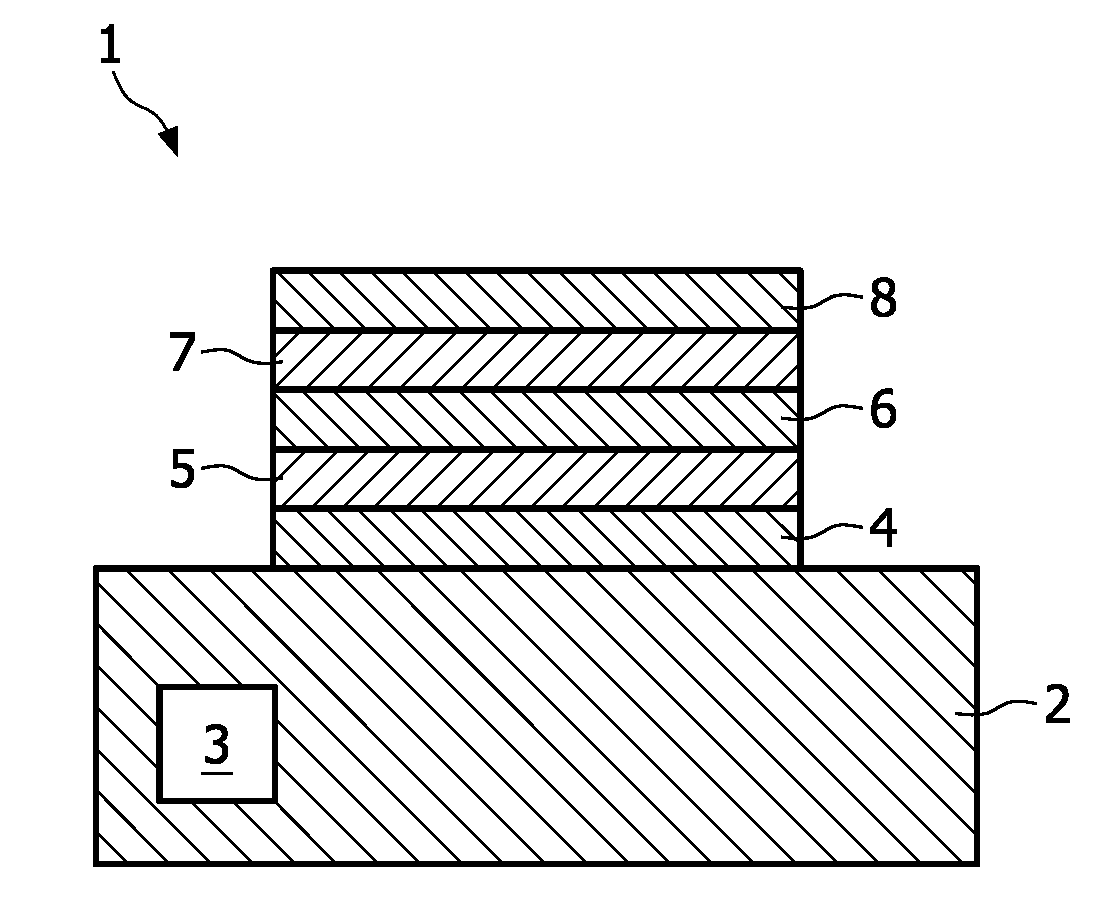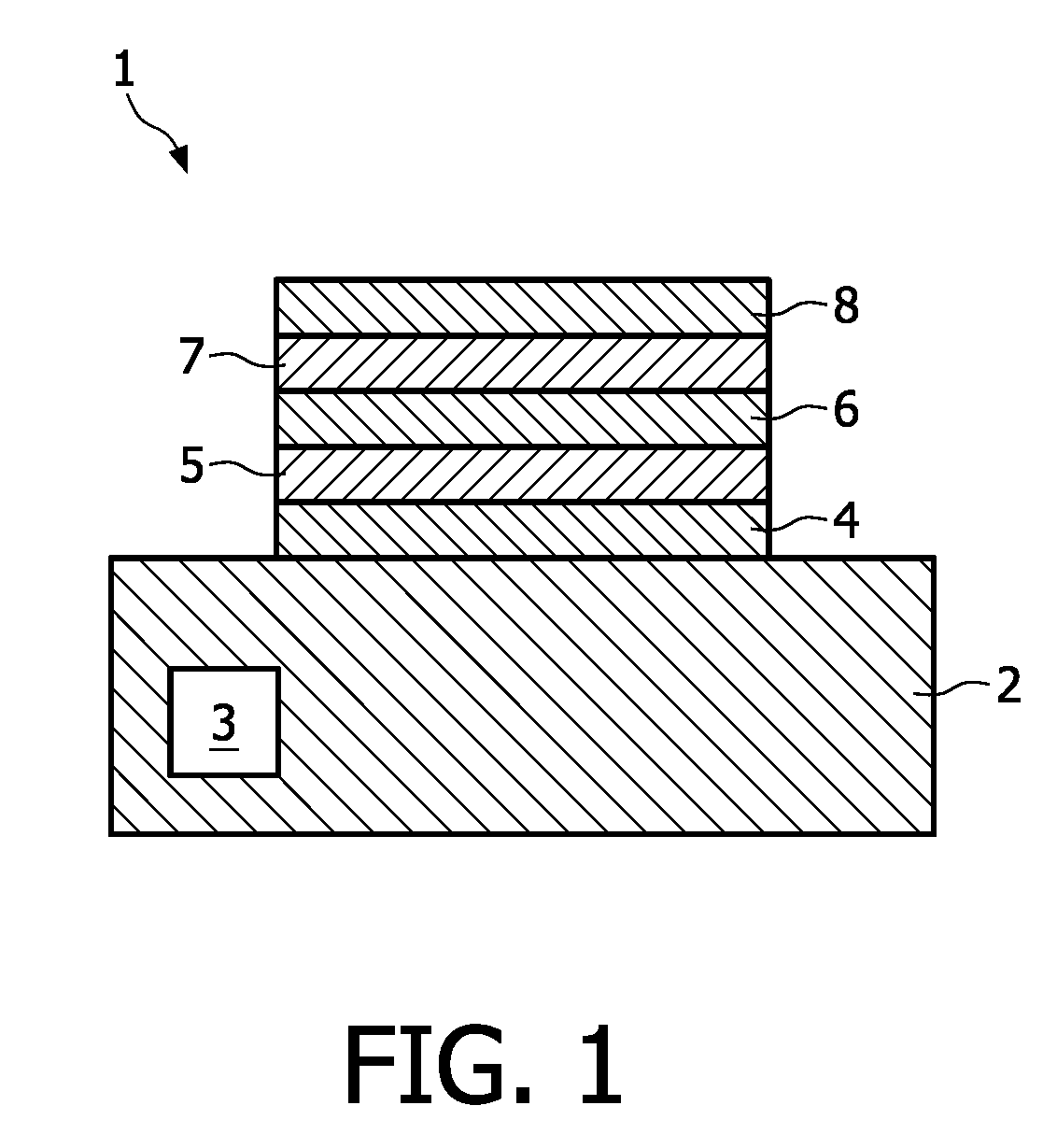Electrochemical energy source with a cathodic electrode comprising at least one non-oxidic active species and electric device comprising such an electrochemical energy source
- Summary
- Abstract
- Description
- Claims
- Application Information
AI Technical Summary
Benefits of technology
Problems solved by technology
Method used
Image
Examples
Embodiment Construction
[0029]Although the invention is not limited to a solid-state battery, this type of battery is one of the main fields of application. The invention is thus explained with the help of such a structure.
[0030]The solid-state battery 1 depicted in FIG. 1 is based on a substrate 2 comprising, for instance, silicon, but other types of substrate materials are not excluded. Electronic devices, like a transistor 3 may be incorporated into the substrate 2. On this substrate 2 a current collector layer 4 is deposited. This current collector layer 4 may have also the function of a barrier layer. On this collector layer 4 a cathode layer 5 is deposited, which, according to the invention comprises non-oxidic lithium compound. On the cathode layer an electrolyte layer 6 is deposited, whereon the anodic electrode layer 7 has been deposited. The structure is completed by a second current collector layer 8 deposited on the anode layer 7. Electrical connections are made to both current collector layers...
PUM
| Property | Measurement | Unit |
|---|---|---|
| Fraction | aaaaa | aaaaa |
| Length | aaaaa | aaaaa |
| Length | aaaaa | aaaaa |
Abstract
Description
Claims
Application Information
 Login to View More
Login to View More - R&D
- Intellectual Property
- Life Sciences
- Materials
- Tech Scout
- Unparalleled Data Quality
- Higher Quality Content
- 60% Fewer Hallucinations
Browse by: Latest US Patents, China's latest patents, Technical Efficacy Thesaurus, Application Domain, Technology Topic, Popular Technical Reports.
© 2025 PatSnap. All rights reserved.Legal|Privacy policy|Modern Slavery Act Transparency Statement|Sitemap|About US| Contact US: help@patsnap.com


